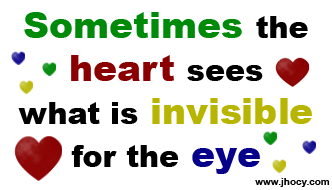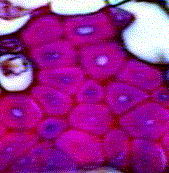Scheme of the circulation:
The blood circulation of the apple snail is a typical example of the circulation
in a
monocardia: there is only one auricle that receives oxygen rich
blood from the lung and the gills and deoxygenated blood from the kidney. So
there is no separated blood circulation for oxygen rich and deoxygenated blood
like in mammals and birds. It's a less efficient system, but it fulfils the
needs of a snail very well.
The
blood of apple snails (and snails in general)
has two functions:
transport of O,
CO, hormones, nutrition and waste products
and a
structural function: a hydroskeleton.
The transport capacity of the blood for O
and CO is enhanced by the chemical substance
hemocyanine in the blood cells. Hemocyanine fulfils the same function as haemoglobin
does in mammals (binding O and CO
to ease transportation), but is colourless in contrary to the red colour of
haemoglobin.
As the body of a snail does not contain a skeleton to support the extension
movements, for example stretching out a
tentacle,
snails have to use another way: regulating the blood pressure in the body parts.
In other words: inflating and deflating parts of the body in combination of
muscle contraction to change shape. The regulation of the local blood is obtained
by controlling the input and output of the bloodflow by contracting and relaxing
small muscles that surround the veins.
Retracting movements are done by simple muscle contraction, without the need
of fluid transportation.
Snail heart in action:
The
transport of the blood to and from the organs occurs through arteries
(from heart to organs) and veins (from organs to heart). Snails don't have capillary
veins and arterioles, which means their blood doesn't flow within tube-like
structures (veins and arteries) during the whole circulation, but at the tissue
level the blood circulates free between the cells and structures embedded in
blood cavities (
hemocoels) within the body (=
open circulation).
The circulation and filtration of the blood:
The
heart of apple snails is well developed and consists of two chambers:
the auricle and the ventricle.
The
auricle is which receives the blood influx from the lung and the
kidney veins is much smaller then the ventricle. Inside the auricle, there are
many small muscle fibres connecting the opposite wall trough the lumen. The
walls have a spongy surface at the inside and a basal layer at the outside.
The blood is able to reach the basal membrane through the spongy surface. Contraction
is achieved by contracting these muscle fibres.
The
ventricle is much larger and has thick, muscular walls with many
spaces between the wall muscles, allowing the blood to be trapped in these semi-vescicles
and filtered through the basal membrane. In contrast with the auricular contraction,
the ventricular contraction is based on contraction of the wall muscles. The
mean ventricular pulse pressure of the African apple snail
Lanistes
carinatus is reported to be around 7.8 cm of water.
The aortic
ampulla functions as a compensation sac and compensates the
elevated blood pressure in the aorta during the contraction of the ventricle.
Besides its function to regulate the blood pressure, the ampulla also has a
function in the immune system as the walls of the ampulla consists of vacuolated
tissue with many phagocytes in it. These phagocytes possibly eliminate micro-organisms
from the bloodflow. The wall of the ampulla is relatively impermeable, excluding
the ampulla for blood filtration.
Both the heart and the ampulla are embedded in the
pericard, which is
connected with the posterior kidney through a renopericadial canal. The walls
of the pericard cover the heart and the ampulla and in the pericard cavity the
walls are covered with microvilli, small intercellular channels and ridges.
Near the renopericardial canal there are some mucous cells secreting mucus,
presumably to bind small particles to be transported to the kidney.
The fluid excreted in the pericard cavity can be considered to be primary urine
and this fluid is transported to the kidneys for further filtration and resorption
of usable compounds (sodium and chlorine).
The
kidney or
nephridium consists of two
parts: the posterior chamber which excretes uric acid and purines and the anterior
chamber which has osmoregulatory function.
The
posterior kidney chamber receives the primary urine from the pericard
cavity. The folds on the posterior chamber wall have a dense vascular network
and are covered with excretory, ciliated and mucous cells. The excretory cells
excrete uric acids and other purines from the blood into the lumen of the chamber
in which the primary urine flows.
The
anterior kidney chamber differs from the posterior chamber in that
the lumen is occluded with large lamina that covers the walls. These lamina
remarkably increase the surface area that comes in contact with the urine. The
epithelium on these lamina is almost entirely consisting of resorptive cells
that presumable resorb ions from the urine into the blood.
The
renal aperture (urine opening) is situated
in the upper region of the
right mantle
cavity. The urine produced by the kidneys is expelled here.
The
aorta with it's white calcareous granula in it's wall consists two
parts: the anterior and the posterior part.
The
anterior aorta connects the heart with the head (cephalic hemocoel)
and the foot (foot hemocoel), while the
posterior aorta divides close
to the heart with one artery distributing the blood to the
digestive
system and the second serves several other organs (
testis,
ovaria, intestines etc.).
After circulating through the tissues and hemocoels of the snail, the blood
is collected in large veins and brought to the posterior kidney.
A portion of the blood that enters the posterior kidney directly flows back
to the heart, while the remaining blood enters the vascular system of the kidneys
(posterior and anterior part).
After passing the anterior kidney, the blood flows through the
mantle
vein, from where many small veins bring the blood to the
gills
and the
lung, where O uptake
and CO is exchange takes place.
The lung-gill vein collects the oxygen rich blood from the lung and the gills
and brings it back to the heart.
copy right :
http://www.applesnail.net/content/anatomy/circulation.php






































